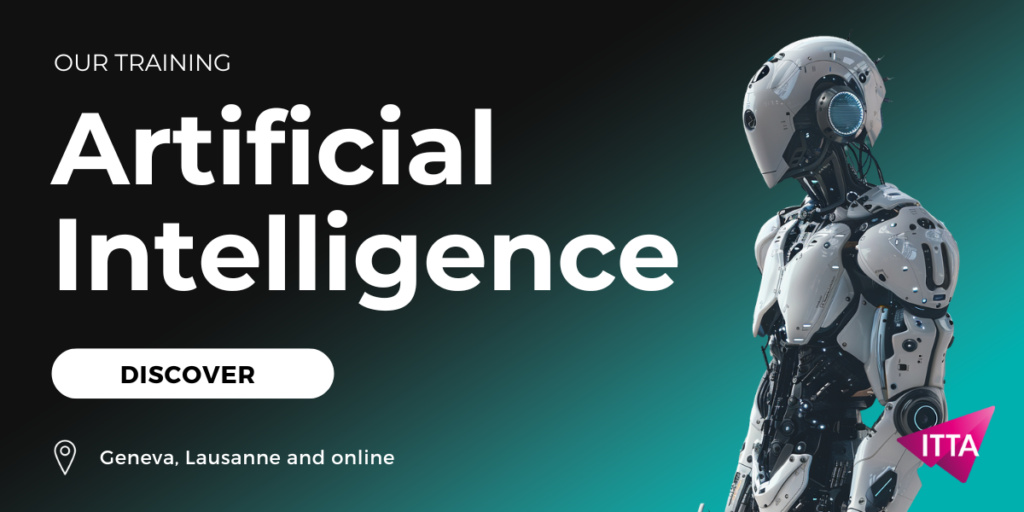Home > How the IT Skills Shortage Threatens Your Business
Digital transformation and the adoption of new technologies, particularly generative AI (genAI), are threatened by a growing lack of IT skills. According to IDC, this shortage hampers digital projects and negatively impacts financial outcomes. By 2026, over 90% of global organizations will face this technological skills crisis, leading to significant losses.
Article Summary:

Skills in artificial intelligence (AI), IT operations, and cloud development are severely lacking, according to an IDC report. This deficit hinders digital projects and the adoption of new technologies like generative AI, negatively impacting company financial results.
A recent IDC Research survey of over 800 North American IT leaders reveals that nearly two-thirds of respondents have experienced revenue losses, quality issues, and decreased customer satisfaction due to the skills gap. IDC predicts that by 2026, more than 90% of global organizations will be affected by this IT skills crisis, leading to estimated losses of $5.5 trillion due to product delays, decreased competitiveness, and lost contracts.
63% of surveyed IT leaders report that the skills gap has delayed digital transformation initiatives by three to ten months on average. AI skills are the most sought-after, closely followed by IT operations skills. Additionally, skills in cloud architecture, data management, storage, and software development rank among the top ten needed skills according to respondents.

(credit: IDC)
According to Gina Smith, PhD, IDC’s research director for IT skills, non-technical skills like digital business, human relations, and leadership are also crucial. “Finding the right people with the right skills for the right positions has never been more challenging,” she said. “Companies must be creative in recruiting, training, upskilling, and reskilling their employees. A learning culture is essential.”
IDC’s report “Enterprise Resilience: IT Skilling Strategies, 2024” offers solutions to help companies overcome this skills shortage. It presents data from the North American IT Skills Survey 2024 and recommendations for creating a learning culture within companies.
With generative AI capturing the majority of tech investments, companies are cutting non-essential positions to replace them with workers skilled in AI. In Q1 2024, U.S. companies announced 257,254 job cuts, a 120% increase from Q4 2023, primarily in the tech sector and government positions, according to a Challenger, Gray & Christmas report.
Ironically, generative AI, also lacking in qualified talent, could play a key role in addressing current skills shortages, according to a Kaspersky Research study. 40% of the 2,000 executives surveyed plan to use generative AI tools like ChatGPT to fill these gaps by automating certain tasks. Check out our article on the Top 10 AI Tools to Use in Business in 2024 to Increase Productivity.

(credit: IDC)
A common concern is that generative AI will replace jobs. However, studies show that, like other technological advances, generative AI will likely create more jobs than it eliminates. According to Forrester Research’s “Generative AI Jobs Impact Forecast 2023,” this technology will influence 4.5 times more jobs than it replaces, accounting for nearly 30% of jobs lost due to automation by 2030.
“We anticipate generative AI will replace 90,000 jobs in 2024, reaching 2.4 million by 2030,” the study indicates. While this number may seem high, Forrester notes that overall, automation and AI will replace only 4.9% of U.S. jobs by 2030. Job losses over the next two years will remain modest until issues regarding intellectual property rights, copyright problems, model refresh rates, model biases, ethics, and model reliability are resolved.
The latest International Monetary Fund (IMF) report on the impact of generative AI presents a mixed picture. The study reveals that up to 60% of jobs will be exposed to AI effects. About half of the affected jobs could benefit from increased productivity, while the other half may see their tasks performed by generative AI tools, reducing labor demand, lowering wages, and decreasing hiring.
“Many studies have predicted the likelihood of jobs being replaced by AI,” the study indicates. “However, we know that in many cases, AI will complement human work.”

This requires employees who know how to work effectively with AI. Rick Villars, IDC group research vice president, observed that companies are increasing their budgets for generative AI and other forms of AI, including infrastructure, services, and software platforms. “What they are not increasing at the same level is investment in training and upskilling their own teams,” Villars said. “This concerns not only IT teams and experts but also training employees on best AI practices to protect their information.”
Training in AI and big data usage ranks third among companies’ training priorities for the next five years and will be prioritized by 42% of companies, according to a World Economic Forum survey.
Organizations face obstacles when trying to improve employee skills, including resistance to training. Employees complain about the length of courses, lack of learning options, and misalignment between skills and career goals, according to the IDC survey.

(credit: IDC)
To overcome these challenges, IT leaders must adopt various strategies to encourage a more effective learning environment. This includes classroom training, hackathons, practical labs, games, quests, and mini-badges.
Creating a positive learning environment requires more than just materials, courses, and challenges. Cultural change starts at the top, and leaders must show why learning is important for the organization.
“This can be done by aligning employees’ goals with the company’s goals, promoting continuous learning throughout the employee’s career, and creating a reward program that recognizes not only performance but also the process,” the IDC report indicates. “It also requires adequate resources in terms of time, money, and personnel.”
Engaging employee training also involves experiential learning. More than eight in ten IT leaders surveyed by IDC indicated they are already using or planning to use experiential learning techniques this year.
Nearly 70% of IDC survey respondents said they were already using experiential learning methods, such as labs, games, and hackathons. Generative AI has also found its place in the current training environment, with over half of surveyed organizations using or piloting it for IT training.
The majority of respondents said they also rewarded employees with mini-certifications based on projects or roles to encourage continuous skills development.
The growing IT skills shortage presents a major challenge for global companies. The impact on digital transformation, the need for non-technical skills, and strategies to bridge this gap show that companies must quickly adapt. Generative AI, though complex, offers a unique opportunity to overcome this crisis if companies invest in proper training.
At ITTA, we understand the crucial importance of staying at the forefront of technological advances. That’s why we offer specialized AI training to help companies fill these skills gaps. Our programs include:
By investing in these training programs, you can not only overcome current challenges but also prepare your organization for a prosperous technological future. Join ITTA and get ahead in the world of AI.


ITTA is the leader in IT training and project management solutions and services in French-speaking Switzerland.
Our latest posts
Subscribe to the newsletter

Nous utilisons des cookies afin de vous garantir une expérience de navigation fluide, agréable et entièrement sécurisée sur notre site. Ces cookies nous permettent d’analyser et d’améliorer nos services en continu, afin de mieux répondre à vos attentes.
Monday to Friday
8:30 AM to 6:00 PM
Tel. 058 307 73 00
ITTA
Route des jeunes 35
1227 Carouge, Suisse
Monday to Friday, from 8:30 am to 06:00 pm.